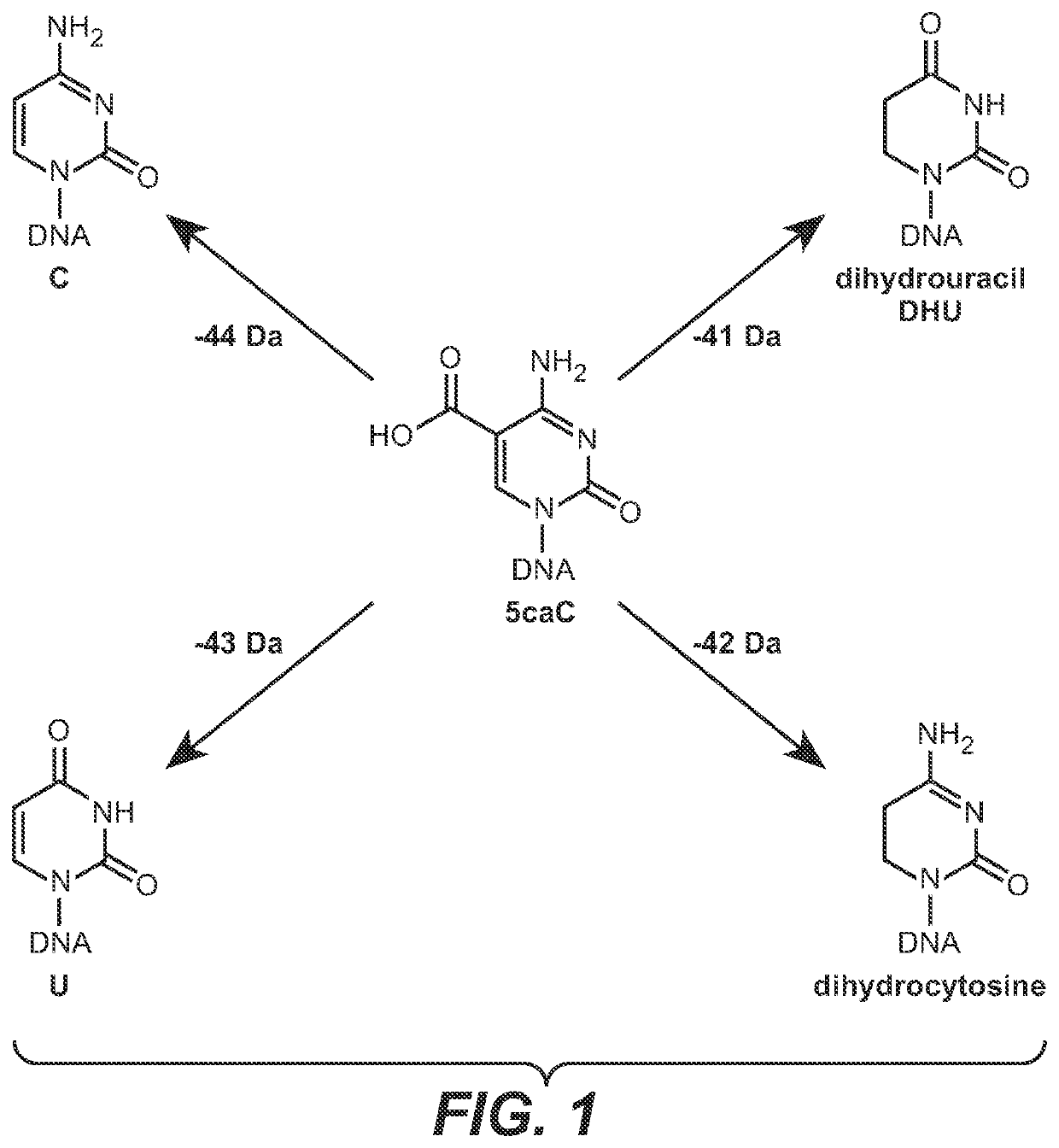Methods for the epigenetic analysis of DNA, particularly cell-free DNA
a cell-free dna and epigenetic analysis technology, applied in the field of biotechnology, can solve the problems of significant degradation of dna, impede the implementation of a technique with very small dna amount, and serious drawbacks of the use of bisulfite in single-base resolution sequencing
- Summary
- Abstract
- Description
- Claims
- Application Information
AI Technical Summary
Benefits of technology
Problems solved by technology
Method used
Image
Examples
Embodiment Construction
1. Definitions and Terminology
[0056]Unless defined otherwise, all technical and scientific terms used herein have the meaning commonly understood by one of ordinary skill in the art to which the invention pertains. Specific terminology of particular importance to the description of the present invention is defined below. Other relevant terminology is defined in International Patent Publication No. WO 2017 / 176630 to Quake et al. for “Noninvasive Diagnostics by Sequencing 5-Hydroxymethylated Cell-Free DNA.” The aforementioned patent publication as well as all other patent documents and publications referred to herein are expressly incorporated by reference.
[0057]In this specification and the appended claims, the singular forms “a,”“an” and “the” include plural referents unless the context clearly dictates otherwise. Thus, for example, “a component” refers not only to a single component but also to a combination of two or more different components, and the like.
[0058]Numeric ranges are...
PUM
| Property | Measurement | Unit |
|---|---|---|
| temperature | aaaaa | aaaaa |
| chemical oxidizing | aaaaa | aaaaa |
| sizes | aaaaa | aaaaa |
Abstract
Description
Claims
Application Information
 Login to View More
Login to View More - R&D
- Intellectual Property
- Life Sciences
- Materials
- Tech Scout
- Unparalleled Data Quality
- Higher Quality Content
- 60% Fewer Hallucinations
Browse by: Latest US Patents, China's latest patents, Technical Efficacy Thesaurus, Application Domain, Technology Topic, Popular Technical Reports.
© 2025 PatSnap. All rights reserved.Legal|Privacy policy|Modern Slavery Act Transparency Statement|Sitemap|About US| Contact US: help@patsnap.com



